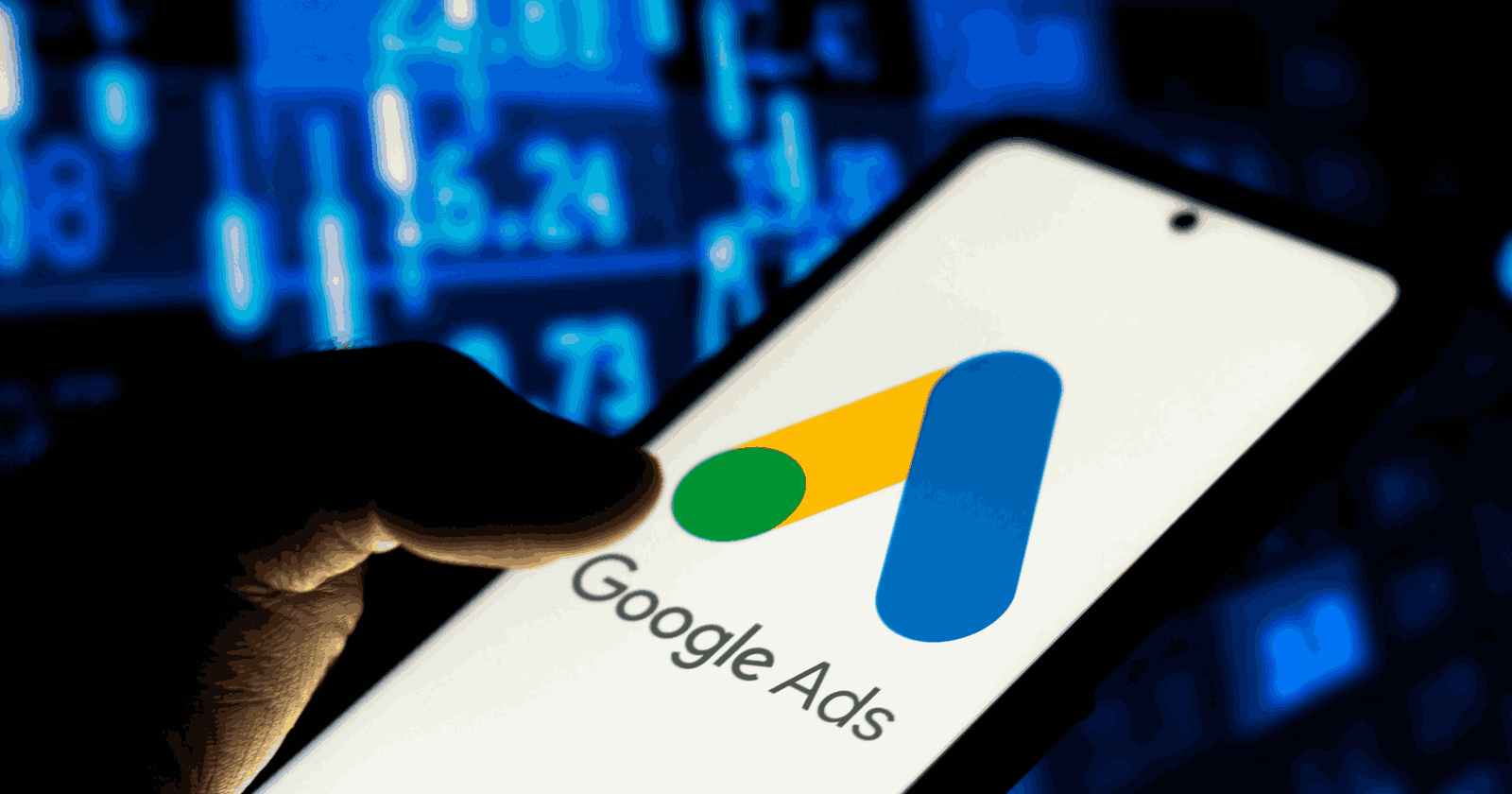
How Much Does Google PPC Cost? Factors That Affect Your Budget
- minhaj_1109@hotmail.com
- January 31, 2025
- Digital Advertising
- 0 Comments
How much does Google PPC cost per month? PPC advertising is one of the most popular digital marketing strategies. It offers rapid and measurable results, such as improved web traffic, B2B lead generation, and sales.
PPC ads are ads that a business pays for only when an interested customer clicks on them. Thus, PPC helps companies to ensure cost-effectiveness while targeting their audience.
Google Ads, another famous PPC platform, allows businesses to increase or decrease their advertising spending based on their budget, spending between $100 and $10,000 monthly.
In 2025, a company can expect to pay an average of $0.11-$0.50 per click and $0.51-$1,000 for 1,000 impressions. However, the cost per click (CPC) is influenced by several factors, including competition, ad ranking, industry, bidding strategy, and campaign strategy.
Boost your business with PPC, as it allows businesses to connect with their audience effectively through its dynamic advertising solution.
How Much Does Google PPC Cost?

You may be wondering about Google advertising costs for small businesses. The answer depends mainly on understanding your customer base and search behaviors. Complementing your PPC strategy with your audience’s needs will improve your ROI.
So keep reading till the end to learn how to maximize your Google Ads budget and achieve your business goals.
Understanding Google Ads: A Powerful PPC Advertising Platform
First, let us see what Google Ads is like. It is an online advertising platform under a pay-per-click advertisement system, within which a business advertises products or services on search engines.
Advertisers can create targeted text ads that can be placed on Google’s search page results, on Google Play, and on Google Maps, as well as on other sites under the Google umbrella, all to generate potential interest in their customers.
One great advantage of advertising on Google is that you do not pay for an ad placement; you only pay when someone clicks on it. This means that your budget is being spent wisely; you are attracting the attention of users actively searching for what you have to offer.
To answer the question: How much does it cost per click on Google Ads? The answer is that it varies according to the level of competition, the kind of industry, the bidding strategy, etc.
You can also set the average daily cost and the monthly budget for your PPC ads, thus having control over the spending related to the ads while optimizing performance.
Key Factors Affecting Google Ads Pricing
The basic principles affecting Google Ads’ price structure require understanding before learning about how much Google PPC costs. These factors impact your total ad expenditure and your campaigns’ efficiency. Let’s discuss this first:
1. Industry
The industry in which you operate highly determines the costs of Google Ads. Some industries, such as legal, accounting, and real estate, feature highly competitive keywords, leading to higher cost-per-click (CPC).
Certain products, services, and competitors drive demand for specific search queries. Organizations in competitive industries spend additional funds on Google Ads to achieve market dominance.
2. Budget
Your ad budget drives your costs of Google Ads. The more you pay, the more reach and visibility you will achieve. However, your strategic budget allocation will become more critical if you want to maximize the ROI and avoid wasting resources on less effective campaigns.
3. Quality Score
Google assesses your ads’ relevance and performance, assigning an estimated score of 1 to 10. The Quality Score is based on your ad’s click-through rate (CTR), its relevance to the keywords, and the landing page experience. The Quality Score can significantly affect cost control, as a higher score can result in a lower CPC and a better ad position.
4. Ad Rank
Ad Rank determines your ad’s position on the search results page. It is a combination of Quality Score and maximum bid. A higher Ad Rank improves the ad’s chance of being shown but may also require higher bidding than competitors.
5. Market Trends
Consumer behavior and online advertising trends change constantly. The wider the gap between supply and demand for a keyword, the more fluctuation issues with demand competitiveness and prices. Staying ahead of market trends ensures your campaigns remain relevant and less costly daily.
6. Bid Strategy
Your bid is the maximum amount you will pay for a click on your ad. Setting up a competitive bid to outrank others is necessary, but it should also fit within the budget and report goals. A well-optimized bidding strategy can improve results without going beyond the desired spending.
7. Keywords
The keywords you are targeting influence your CPC. Highly competitive keywords, especially in the money-making industries, can drive up costs. Long-tail or significantly niche keywords can trigger lower CPC and higher conversion rates. Pick keywords based on the balance of costs and relevance.
You might be asking how much does Google Ads pay per click since you are aware of factors affecting Google Ads pricing. The answer depends on your ability to manage and refine various factors that lead to effective and budget-friendly campaigns.
The following section provides tested strategies to help you maximize your Google Ads budget expenditures.
How Google Ads Set Your Cost-Per-Click?
The factors that Google Ads uses to compute cost-per-click (CPC) prevent you from always paying your highest bid amount. Numerous metrics, performance indicators, and promotional ad quality determine the CPC you truly pay rather than your maximum bid.
The following list shows how Google Ads evaluates your CPC values:
1. Ad Relevance and Landing Page Experience
The evaluation of your ad quality starts with keyword relevance assessment followed by click-through rate predictions and website user experience testing by Google.
A captivating ad message might not be enough to prevent a higher CPC since page load speed or landing page relevancy affects the results.
When users discover that your landing page does not meet the promises made in your advertisement, your quality score will decrease, and your CPC will increase.
The success of maintaining your competitive position depends on proper optimization between your advertising content and website destination page.
2. Quality Score
Quality Score is a metric measured on a scale of 1 to 10 that reflects the quality and relevance of your ad. It involves considerations like CTR, keyword relevancy, and landing page experience.
A higher Quality Score means a lower CPC and a higher position in search results. For instance, while both of you may have a general range of biddings if one has a Quality Score of 9, better rates for CPC will be expected than the opponent, who has a score of 5.
3. Ad Rank
Every Ad Rank is determined by your ad’s location on the search results page. It consists of this formula:
Ad rank = Bid amount × Quality Score
That means if your bid amount is 2 and your quality score is 8, then your Ad rank would be 2 × 8 = 16
A higher Ad rank means a greater likelihood of an ad being displayed in a prominent position in the search results. But it does not guarantee splendid spending of the maximum bid amount.
4. Cost-Per-Click (CPC)
You pay only when someone clicks on your ad; this gives smaller businesses the ammunition to compete with bigger ones. According to these formulas, Google calculates the actual CPC that you have to pay:
CPC = Ad Rank of the ad below yours / Quality Score + $.01
If the Ad Rank of the ad below yours is 12 and your Quality Score is 6, then:
CPC = 12 / 6 + 0.01 = 2.01
You would pay $2.01 every time someone clicks on your ad, less than you should have paid.
You can also use online tools, such as a Google Ads cost calculator, to estimate your monthly expenditure on Google Ads.
These calculators consider your industry, target keywords, and budget in providing a realistic estimate of your advertising cost.
The calculator may prompt a high budget for desired results if your employing industry is competitive, like legal services.
What Will You Pay for Google Ads in 2025?
Based on several business characteristics, Google Ads spending during 2025 exists between $100 as the minimum amount and $10,000 as the maximum amount per month.
Your Google Ads price per month depends on your chosen campaign strategy because businesses compete with different bidding tactics within the market.
A Google Ads click costs between $0.11 and $0.5,0, and 1,000 impressions cost between $0.51 and $1,000.
These cost estimates for Google Ads click rates cannot provide accurate outcomes since various elements, such as business sector competition, keyword market demand, and your advertising quality score, determine actual spending levels on click-based payments.
Your budget determination for advertising depends on multiple decisive variables.
1. Industry & Competition – The cost per click remains high for competitive industries, including law and insurance.
2. Ad Ranking & Quality Score – Your CPC becomes lower when your ad quality improves because of higher Ad Rank scores.
3. Target Audience & Keywords – Target Audience & Keywords Present a Direct Trade-Off because bidding on popular terms raises expense, but using specific keywords offers possible savings.
4. Bidding Strategy & Budget – The automated bidding system and daily budget limits.
5. Ad Placement & Targeting –Display advertising costs will rise when placed on premium websites and targeting specific audience groups.
Your monthly Google Ads costs will depend on the business goals and bidding strategy combined with market competition, but you need to plan for an optimum return on investment.
Google Ads Budgeting: How It Works and Why It Matters
Every Google Ads campaign permits users to establish either a daily spending cap or an average monthly spending target.
The budget limits your spending, while Google controls advertising delivery to reach target customers on the days they are most likely to interact with you.
When you begin advertising on Google, you will come across multiple essential terms that describe different cost factors.
1. Budget: The budget is the highest dollar amount, which marks the limit of your monthly or daily spending on your ad campaign.
2. Bid: The value you set for paying for each conversion or click constitutes your bid.
3. Spend: Spend indicates the funds you have paid through your advertising campaign over time.
4. Cost: Running your ads will cost you the full amount of money spent on clicks, impressions, and other actions.
To effectively manage your Google Ads campaigns, you must thoroughly comprehend the standard advertising terminology. This will enable you to control your money and achieve your goals.
FAQs About Google Ads Pricing
How much does Google PPC cost per month?
Google Ads’ monthly price is on a wide-ranging scale from $100 to $10,000. The costs you pay to Google Ads depend on your selected bidding approach, market competitiveness, business niche, and advertisement placement strategy.
Google PPC expenditures for small businesses generally start lower than for large advertisers.
What is the average cost per click (CPC) on Google Ads?
Google Ads CPC pricing varies depending on the industry sector and its current market competition level.
Businesses typically spend between $0.11 to $0.50 to obtain clicks on the Google Search Network and Google Display Network. Competitive markets such as law and finance usually require substantially higher CPC costs.
How much do small businesses typically spend on Google Ads?
Google Ads expenses for small businesses fall between $100 to $10,000 per month based on their marketing aims, target audience, and keyword competition intensity.
Businesses spend their marketing budgets in varying amounts to generate leads, with some testing small amounts to check ad results.
What is the Google Ads price per day?
Google Ads’ cost per day can start as low as $1, yet the company should set its daily budget at $5–$10, which aligns with professional recommendations.
Your everyday budget for Google Ads depends on your advertising targets, automatic bid configuration, and chosen audience specifications.
Competitive business sectors often demand more significant daily funding to establish a strong market position.
How much does PPC cost on Amazon?
The expenses for Amazon PPC depend on the conversion rate, market competition level, and the chosen strategy.
Your Amazon PPC cost should amount to 2.5% of the total product sales price when your target ACoS stands at 25%, and your product converts customers with a 10% click rate.
Google Ads: Is It Worth the Cost? Let’s Conclude
In the fiercely competitive world of the internet, understanding how much does Google PPC costs is key to optimizing ad spending. The kind of budget and strategy a small business or a large enterprise can set goes a long way to ensuring the maximum ROI or the best results possible.
Google’s extensive 91.62% search market dominance demonstrates why most users choose Google to find information, products, and online services. Google Ads is the most prominent paid search platform because its unmatched scale outpaces other search engines.
The most compelling benefit of Google Ads investment is its instant capability to gain market exposure and produce results. Google Ads allows businesses to display at search results prime positions immediately so businesses can generate swift traffic and leads that transform into sales.
The platform stands out because of Google’s ongoing innovations, including smart bidding, responsive search ads, and AI-targeted advertising. The built-in tools within Google Ads enable businesses to enhance campaign performance and maximize advertising expenditures.
Google Ads provides businesses with an excellent solution to build brand visibility while producing conversions.
The Global Search Network indicates that 63% of users have used Google ads. PPC advertising attracts twice as many visitors as SEO-based engagement, making it a powerful tool for driving immediate traffic compared to organic SEO services.
Businesses investing in Google Ads will see a quick return as well as quantifiable results, thus making it a solid financial choice.
Statistics show that 65% of users choose to click on Google ads, demonstrating its capability to attract individuals ready to purchase.
The alignment between your advertising content and user search requirements makes your ad both effective at obtaining clicks and boosting conversion chances.
Google Ads is a flexible, cost-efficient marketing solution that enables small and large enterprises to connect with their defined audience. Thus, it has become a fundamental digital advertising resource.
Looking for Expert Guidance on Your Advertising Strategy?
Regarding business growth through Google Ads and SEO, ZNZDigitalWorks has experts in those areas. We have helped thousands of small businesses improve their online presence, attract more customers, and gain higher rankings on Google via data-driven digital advertising.
Our team of professionals maximizes your ad performance through advanced market research and strategic bidding to ensure your budget is spent efficiently. If the campaign is not working, we change it quickly to accommodate what does work best.
In addition to optimizing paid ads, we will offer you the best website building for your small business, lift organic search rankings, and create a marketing plan aligning with your business goals.
Let us handle the complexities of digital advertising so you can focus on leading your business. Contact ZNZDigitalWorks today to experience real growth.


